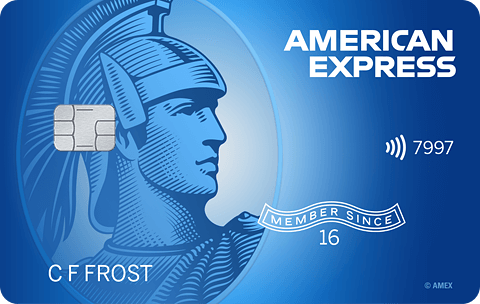- myFICO® Forums
- FICO Scoring and Other Credit Topics
- Understanding FICO® Scoring
- Re: What kind of hit for carrying balances [update...
- Subscribe to RSS Feed
- Mark Topic as New
- Mark Topic as Read
- Float this Topic for Current User
- Bookmark
- Subscribe
- Mute
- Printer Friendly Page
What kind of hit for carrying balances [update 7/3]
Is your credit card giving you the perks you want?
Browse credit cards from a variety of issuers to see if there's a better card for you.
- Mark as New
- Bookmark
- Subscribe
- Mute
- Subscribe to RSS Feed
- Permalink
- Report Inappropriate Content
Re: What kind of hit for carrying balances [update 6/16]
@NRB525 wrote:
@Revelate wrote:
@NRB525 wrote:difference between my 3.875 and 4.125%
Yes, that is a substantial interest rate difference on a mortgage. Honestly, though, you wouldn't be at that boundary except for the unfortunate times in 2010. So the number of cards becomes a way to make the best of a bad situation from file history, not the root cause of being at that boundary.
Cheers!
Which fits 99% of the people who find this place.
Need better emoticons here to actually convey what I think regarding your statement
This board is about understanding the underpinnings of the FICO algorithm.
I use the term unfortunate in the commiserating sense, not a judgemental sense. We are all indeed here to learn, and learning comes from facing reality. Like when I realized that it's time to pay down the cards when the total outstanding balance is $118k on $168k of pre-CLD, pre-account closure, and pre-payment accelleration credit lines
I wasn't clear my apologies: I wasn't suggesting you were being judgemental of me (as I honestly don't care what anyone online thinks of me, I don't measure my life by kudos on a forum or w/e), what I was suggesting was that you were discounting the found data from relevance from understanding FICO maximization tactics and that runs counter to what this board is for... in my opinion anyway.
To be blunt, I am incredibly fustruated with the recent spate of theory and conjecture from people who aren't bringing any data to the table and are blithely disregarding everything from the past many years either out of willful ignorance, laziness, or a desire to troll the forums.
Don't know, and I realized yesterday I don't really care: if people get bad information here, it's not my fault as long as I'm not the one providing it. Pretty much done with this and similar conversations unless there's data brought to the table as interacting with solipsists is worse than a waste of time for me.





















- Mark as New
- Bookmark
- Subscribe
- Mute
- Subscribe to RSS Feed
- Permalink
- Report Inappropriate Content
Re: What kind of hit for carrying balances [update 6/24]
Well it's starting to look to me like going up from .3% to 3.9% utilization had no effect on my scores at all.
The only significant drop -- 11 points in EQ -- occurred contemporaneously with a report of a new inquiry.
And now that I'm starting to reduce the utilization -- down to 2.4% -- no change in scores there either.































Total revolving limits 569520 (505320 reporting) FICO 8: EQ 699 TU 696 EX 673
- Mark as New
- Bookmark
- Subscribe
- Mute
- Subscribe to RSS Feed
- Permalink
- Report Inappropriate Content
Re: What kind of hit for carrying balances [update 6/16]
Yes, data is important, and unfortunately all the data I can provide is that I'm bringnig down utilization in a file that has 16 open CC and 2 closed CC plus a mortgage and LOC reporting, and I'm not getting score boosts by keeping any cards from reporting.
Regarding data, though, of those who are in favor of "all cards but one", in their testing, is that held constant for utilization? That's my main question, and one that gets lost in the quick summaries provided to new members. In these recent threads where clean files are simply adding cards reporting without significant change in utilization, there's virtually no score movement.
In the quotes Tom_Thumb provided from Liz Westons book, about clean files starting from one point, and if any derogatories then a new factor is introduced, that only makes sense. Past experience in credit does raise risk, so is added to the risk model. Any one of us could be surprised with a hardship that causes a derogatory, but until one does, the FICO model doesn't include a "past" factor. I think this only makes sense to include in the discussions, because we see those files with derogatories behave differently from clean files. As you note, there's a lot of examples as people work to rebuild and understand their credit.
Your data is important for the conversation, and is appreciated, but I'm not sure you can expect others to contribute. The data goes into the discussion and as we all know, FICO is complex, not perfectly understood, and thus debatable in a friendly way.
Cheers!
Oct 2014 $46k on $127k 36% util EQ 722 TU 727 EX 727
April 2018 $18k on $344k 5% util EQ 806 TU 810 EX 812
Jan 2019 $7.6k on $360k EQ 832 TU 839 EX 831
March 2021 $33k on $312k EQ 796 TU 798 EX 801
May 2021 Paid all Installments and Mortgages, one new Mortgage EQ 761 TY 774 EX 777
April 2022 EQ=811 TU=807 EX=805 - TU VS 3.0 765

- Mark as New
- Bookmark
- Subscribe
- Mute
- Subscribe to RSS Feed
- Permalink
- Report Inappropriate Content
Re: What kind of hit for carrying balances [update 6/16]
Hi NRB525. Sounds like the OP's thread turned into a discussion of one specific question, which is:
Suppose a person has 3+ credit cards. Could he get a boost in score from having all CCs but one report $0, compared with the strategy of having the same total utilization but most or all his cards reporting a balance?
Or equivalently:
Is the "number of accounts reporting a balance" considered a factor by FICO in its scoring?
At certain points in the thread, you seemed certain that this was NOT a factor at all. (At one point you referred to it as "non-existent", for example.) At other points you seemed more willing to believe that it was a factor for many scorecards and/or FICO versions, but just not an important factor. If you are inclining toward the second view, then you may have been talking at cross purposes with some of the folks here. I don't think anyone believes that it is a factor that can cost a person a huge number of points. I am pretty sure that everyone thinks it is a small number -- though a small number can be important when you are applying for an important loan, as Revelate points out.
If, however, you are doubtful that it is a factor that FICO considers at all, then this statement by FICO describing its scoring may be helpful to look at.
http://www.myfico.com/CreditEducation/Amounts-Owed.aspx
In it FICO describes the various sub-factors it uses in the "Amounts Owed" category. It explicitly states that "How many accounts have balances?" is one such factor, and goes on to say "A larger number of accounts with amounts owed can indicate higher risk of over-extension."
Of course it is possible that FICO is lying, or misinformed about their own models, but if not then this may answer the question.
Naturally it still leaves the question of how FICO implements that untouched, e.g. "Is it a factor in every scorecard of every model? Only some? How much of an impact?" But that it is a factor for many folks seems likely, whether one looks at testing or the more straightforward method of asking FICO. Furthermore, there's the practical question of it being (as Revelate observed earlier) an actionable step for someone trying to squeeze a few extra points out. No one is saying that it is certain to help every person, or that it will help a lot. But it is a clear action that, according to FICO, should help many people, and therefore there's no reason not to recommend it to people on this forum.
Best wishes!
- Mark as New
- Bookmark
- Subscribe
- Mute
- Subscribe to RSS Feed
- Permalink
- Report Inappropriate Content
Re: What kind of hit for carrying balances [update 6/16]
Well stated, CGID. I do not dispute that in the short term, a file can be groomed, particularly as Revelate ponts out, on FICO-04 I think it is, vs 08 which sounds like it is less susceptible to such tricks.
My view is that in the longer term, it is in the cardholders best interest to keep more cards active, including reporting balances and PIF, than to only have one card report a balance, because I think that payment action is actually handled differently in the FICO models. Revelate doesn't agree with this, and there's not a lot of other references I have to work from, so I will just have to keep on my march of reducing utilization to see if 800 is possible with ~17 accounts reporting ![]()
My view of the longer term is that with more payment activity, the file becomes stronger and much less influenced by how many cards report. I most definitely know, and there have been some recent examples here, that cardholders who are very quiet with their cards, then start suddenly showing balances can be subject to AA in the form of CLD by certain lenders who aren't used to seeing those balances. And, at the end of the day, real borrowing such as this is the point of the FICO score.
I also think that those casual visitors here who take the advice to reduce the number of cards reporting are actualy reducing utilization first, and the card count impact is minimal. Their main benefit is from lowered utilization. So while the end result is fine, the understanding of what is really the primary driver of the score improvement in the file may not be all there.
"A larger number of accounts with amounts owed can indicate higher risk of over-extension." is one of those squishy sentences that covers a lot of ground, but I think the implication is large number of cards with balances carrying interest costs. If the overall utilization on all cards is under control, I doubt this becomes a huge issue for the account. I know it is not for mine.
Cheers!
Oct 2014 $46k on $127k 36% util EQ 722 TU 727 EX 727
April 2018 $18k on $344k 5% util EQ 806 TU 810 EX 812
Jan 2019 $7.6k on $360k EQ 832 TU 839 EX 831
March 2021 $33k on $312k EQ 796 TU 798 EX 801
May 2021 Paid all Installments and Mortgages, one new Mortgage EQ 761 TY 774 EX 777
April 2022 EQ=811 TU=807 EX=805 - TU VS 3.0 765

- Mark as New
- Bookmark
- Subscribe
- Mute
- Subscribe to RSS Feed
- Permalink
- Report Inappropriate Content
Re: What kind of hit for carrying balances [update 6/16]
@NRB525 wrote:Well stated, CGID. I do not dispute that in the short term, a file can be groomed, particularly as Revelate ponts out, on FICO-04 I think it is, vs 08 which sounds like it is less susceptible to such tricks.
My view is that in the longer term, it is in the cardholders best interest to keep more cards active, including reporting balances and PIF, than to only have one card report a balance, because I think that payment action is actually handled differently in the FICO models. Revelate doesn't agree with this, and there's not a lot of other references I have to work from, so I will just have to keep on my march of reducing utilization to see if 800 is possible with ~17 accounts reporting
My view of the longer term is that with more payment activity, the file becomes stronger and much less influenced by how many cards report. I most definitely know, and there have been some recent examples here, that cardholders who are very quiet with their cards, then start suddenly showing balances can be subject to AA in the form of CLD by certain lenders who aren't used to seeing those balances. And, at the end of the day, real borrowing such as this is the point of the FICO score.
I also think that those casual visitors here who take the advice to reduce the number of cards reporting are actualy reducing utilization first, and the card count impact is minimal. Their main benefit is from lowered utilization. So while the end result is fine, the understanding of what is really the primary driver of the score improvement in the file may not be all there.
"A larger number of accounts with amounts owed can indicate higher risk of over-extension." is one of those squishy sentences that covers a lot of ground, but I think the implication is large number of cards with balances carrying interest costs. If the overall utilization on all cards is under control, I doubt this becomes a huge issue for the account. I know it is not for mine.
Cheers!
OK. Like I thought, you guys were talking at cross purposes. I am pretty sure that everyone agrees that for the long game, it's just better in all kinds of ways to not try to keep all accounts except one at $0 -- but rather to let all accounts report naturally and organically (use your cards as you normally would), keep all cards a good deal away from being maxed out, and PIF. That's just generally good advice for all kinds of reasons: ease of use, minimizing headache, ensuring that your CCCs see you as a regular user, and probably many others.. The ONLY reason I have ever heard the veterans here suggest the "all accounts but one report $0" is for an immediate short term need to extract all available points -- including the small number of points one gets for the factor "How many accounts show a balance?"
Given that you actually agree that the latter is indeed a factor that FICO uses (at least I think you do?) it's a pity that this couldn't have been made clearer earlier on, in which case probably less time would have been spent arguing about it. Again, I think everyone agrees that letting accounts report naturally is fine for the long game, even better, and that the only reason to zero out is for an immediate benefit associated with a certain sub-factor.
You close by saying:
"A larger number of accounts with amounts owed can indicate higher risk of over-extension." is one of those squishy sentences that covers a lot of ground, but I think the implication is large number of cards with balances carrying interest costs. If the overall utilization on all cards is under control, I doubt this becomes a huge issue for the account. I know it is not for mine.
I'd suggest that you look at the entire page I linked to. The context of that squishy sentence is extremely clear. It's explaining that, for this very specific factor that FICO has just explicitly named ("How many accounts show a balance?") it is regarding several accounts with a positive balance as worse than (say) one. The structure of the page as a whole is to list a number of specific factors it uses in its models that would be related to the "Amounts Owed" category. I see no evidence that FICO is trying to advise people not to pay credit card companies interest, which may be wise financial management but isn't what the page is about.
- Mark as New
- Bookmark
- Subscribe
- Mute
- Subscribe to RSS Feed
- Permalink
- Report Inappropriate Content
Re: What kind of hit for carrying balances [update 6/16]
Today my TU report dropped 3 points ... after my utilization dropped from 3.9% to 2%. Go figure ![]()































Total revolving limits 569520 (505320 reporting) FICO 8: EQ 699 TU 696 EX 673
- Mark as New
- Bookmark
- Subscribe
- Mute
- Subscribe to RSS Feed
- Permalink
- Report Inappropriate Content
Re: What kind of hit for carrying balances [update 6/16]
I'd suggest that you look at the entire page I linked to. The context of that squishy sentence is extremely clear. It's explaining that, for this very specific factor that FICO has just explicitly named ("How many accounts show a balance?") it is regarding several accounts with a positive balance as worse than (say) one. The structure of the page as a whole is to list a number of specific factors it uses in its models that would be related to the "Amounts Owed" category. I see no evidence that FICO is trying to advise people not to pay credit card companies interest, which may be wise financial management but isn't what the page is about.
Well, the rest of the page has the emphasis on total amounts borrowed: More is worse, no doubt about it. As long as amounts borrowed are under control, that bit about "large number of accounts" becomes benign.
My complaint against the common use of "all cards but one at zero" is because that, more often than not, is all that is said when a new user asks "How can I improve my FICO score?" with no context about short term vs long term. It is a shorthand that leaves a lot unsaid, whether the speaker knows it or not, and results in confusion and thus, to my way of thinking, bad advice. The only shorthand explanation that I am willing to give regarding credit is, "never be late with a payment". Anything beyond that gets into all kinds of complex strategy points that aren't easily boiled down to short phrases.
Oct 2014 $46k on $127k 36% util EQ 722 TU 727 EX 727
April 2018 $18k on $344k 5% util EQ 806 TU 810 EX 812
Jan 2019 $7.6k on $360k EQ 832 TU 839 EX 831
March 2021 $33k on $312k EQ 796 TU 798 EX 801
May 2021 Paid all Installments and Mortgages, one new Mortgage EQ 761 TY 774 EX 777
April 2022 EQ=811 TU=807 EX=805 - TU VS 3.0 765

- Mark as New
- Bookmark
- Subscribe
- Mute
- Subscribe to RSS Feed
- Permalink
- Report Inappropriate Content
Re: What kind of hit for carrying balances [update 6/16]
@NRB525 wrote:
@Vulcan1600 wrote:
@NRB525 wrote:
Thanks for the info. So, basically, your EX did not move, once the file was allowed to stabilize again? 786 earlier, now 787? So still net no change from all those cards going in and out of reporting, as long as utilization stays low overall.
Not sure what to think. I guess I'm fortunate that with all the new cards that reported that it wasn't that much of a disaster afterall. Next couple of months will be interesting to see.
"Not that much of a disaster". lol ... The level of fear about about how the FICO score may change from getting up out of bed and not putting the correct foot on the floor...
What I'm trying to convey, and what this thread is bearing out, is number of cards with balances is not the factor, utilization level is the factor.
The Utilization Monster isn't all that sharp-toothed, but the "Number of Cards Reporting Monster" is non-existent.
Not the biggest factor admittedly but definitely one of the factors looked at when thinking about Amounts owed.
To dismiss it as almost an afterthought is the wrong approach IMO.
- Mark as New
- Bookmark
- Subscribe
- Mute
- Subscribe to RSS Feed
- Permalink
- Report Inappropriate Content
Re: What kind of hit for carrying balances [update 7/3]
OK today my utlization came down to .3%, right where I started my little experiment.
So far all that's happened on the way up (while increasing my overall utilization from .3 to 3.9) is:
1. when one small card went from 0 to 49% my EQ dropped 2 points
2. subsequently my EX dropped 11 points, but it seemed to coincide with an inquiry
On the way down there was a 3 point drop in TU, but I'd undergone a couple of inquiries due to
an apartment hunt in which I was a guarantor.
My gut feeling is that neither increasing my utilization from .3 to 3.9%, nor decreasing if from 3.9 to .3,
had any effect whatsoever on my FICO scores.
I guess it's going to take a bolder experiment than mine to really test the water.
I had intended to go up to 5%, but I chickened out at 3.9 ![]()































Total revolving limits 569520 (505320 reporting) FICO 8: EQ 699 TU 696 EX 673